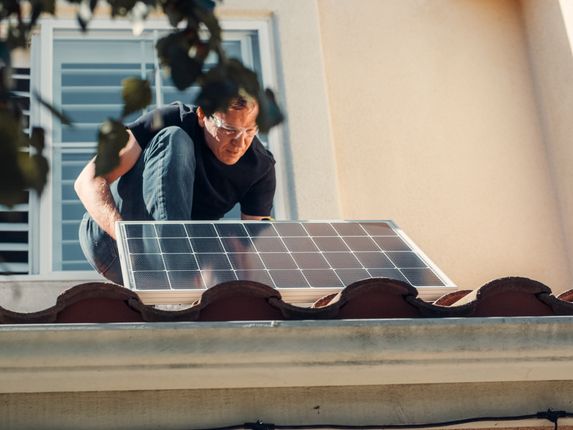As we all look for ways to reduce our power bills and our carbon footprint, it’s worth remembering sustainability, like charity, begins at home. Here are some tips on upgrading your home to make it more energy efficient while also boosting its value should you decide to sell.
What do we mean by self-powered homes?
Essentially, self-powered homes are those designed or retrofitted to generate energy, conserve energy, or harness what nature gives us for free to cool and warm our homes rather than paying power companies for our energy.
What about passive versus active design?
It’s important to remember that a self-powered home doesn’t have to be draped in thousands of dollars worth of technology to make it more sustainable or energy efficient. We can also make our homes more energy efficient with passive design features.
Passive design features might include making the most of your property’s orientation to achieve natural shading in summer and access to low winter light in winter. Retro-fitting insulation, draught-proofing all doors and windows and installing double-glazed windows are all passive design features that can make a huge difference to your power bills and year-round comfort.
Active design features include solar panels, solar hot water systems and batteries to store energy. While the initial outlay can be significant, you will save on bills and these additions also add value to your home when it’s time to sell. Best of all, these energy sources are renewable, meaning they aren’t depleted when used and they don’t cause pollution.
Somewhat unsurprisingly, sunny Australia has the largest rate of household adoption of solar panels in the world, with one in four households now using some solar power. And as technology improves and batteries become commonplace, solar panels are only going to become more appealing.
Best additions to power your home more efficiently?
It depends. If you use a lot of hot water or live in a colder climate, a solar hot water system is a great idea. If you have a large home that needs a lot of power to run, solar panels will make a huge difference. And even if you have a smaller home, solar panels are worth considering as the reduced bills will make up for the initial outlay in a matter of a few years, and add value to the property. Plus, solar power is better for the environment.
Solar batteries are now here to stay, meaning you can store the energy generated by your panels. Previously, excess energy would be directed back to the grid, and if the sun wasn’t shining you’d have to buy energy in. Now, battery storage means energy is stored – and you can either fit a battery to an existing system or include a battery with your new one.
Household wind turbines are another relatively new arrival on the market. Although nowhere near as ubiquitous as solar panels, wind turbines are getting smaller, quieter and more affordable, so we can expect to see more of them in the near future, particularly in rural areas with no close neighbours.
Are there any government grants available?
State governments are keen to support homeowners to have more energy-efficient homes. Grants and rebates come and go, and rules and eligibility requirements are constantly changing, but it’s worth having a look at your state government website to see what they offer households. Here are a few:
The NSW Climate and Energy Action website has lots of information available and incentives to convert to solar power.
In the ACT, there is Home Energy Support for eligible households, with rebates available.
The Solar Homes programme is on offer in Victoria.
Nationally, the Small Scale Renewable Energy Scheme helps eligible applicants with installing systems in businesses or homes, including wind and solar systems.
You can find more information about various state and national schemes on Solar Quotes, which tracks government announcements and connects consumers with reputable solar panel providers.
A final word on energy efficiency
Remember, homes lose a huge amount of heat and therefore energy through doors and windows. Simply sealing draughts and being more active in managing your home’s temperature will make a big difference – even thicker curtains with pelmets and a floor rug in winter will make a difference to your bills, and insulating your ceiling is a no-brainer.
For cooling your home in summer, look into external blinds (battery-operated ones are great), louvre windows with Crimsafe screens that you can open up at night to purge built-up heat, and trees and greenery in your garden rather than hard landscaping, which traps and radiates heat. And, of course, having shorter showers, putting on a jumper rather than the heating, and even turning on a basic fan in summer are old-fashioned tricks that still do the job.
Want to learn more about making the most of your next 30 years?
We’re committed to making life better for the over 55s. Check out downsizing.com.au for more insights and great advice on living life to the fullest.


